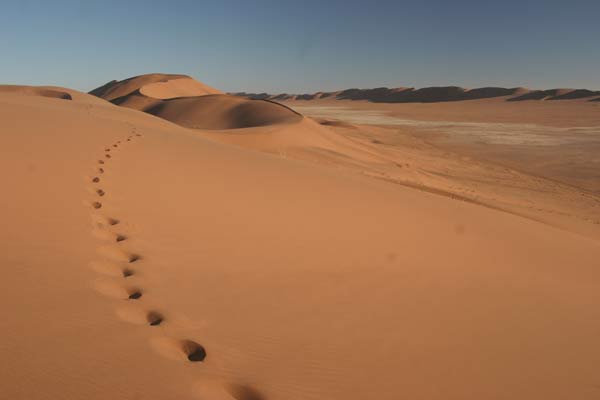
Sand Grains in African Desert 1 Million Years Old

Although desert sands might seem to shift ceaselessly under the wind, scientists now find the grains of sand in the Namib Sand Sea in Africa have dwelled there for at least a million years.
Analysis of desert sands could shed light on how climate might have changed over the millennia, researchers explained.
The vast Namib Sand Sea, which covers roughly 13,125 square miles (34,000 square kilometers) along the coast of Namibia, is one of the world's oldest and largest sand deserts. However, little is known about the origin of its sands — whether they come from remote sources or local sediments. This uncertainty holds true with other large deserts as well, largely because one sand dune looks much like another.
"While a lot of climate research has focused on the polar regions, deserts and particularly sand deserts remain relatively understudied and poorly understood, despite the fact that millions of people live in arid and semi-arid areas threatened by desertification," researcher Pieter Vermeesch, a geologist at the University of London, told OurAmazingPlanet.
To track the movement of sand grains across the sand sea, Vermeesch and his colleauges measured levels of uranium and lead in the sands to confirm that their primary source is apparently the Orange River at the southern edge of the Namib desert. They also analyzed radioactive isotopes produced by cosmic rays (high energy particles that rain down on Earth from space), which allowed them to estimate the amount of time the sand had been present in the region.
"All samples were collected on the crests of large — up to 200 meters (656 feet) high — dunes, quite a strenuous workout," Vermeesch recalled.
The researchers found that it took at least a million years for winds to blow sands across the sand sea.
Sign up for the Live Science daily newsletter now
Get the world’s most fascinating discoveries delivered straight to your inbox.
"While geologists have long known that the Namib Sand Sea is a very old landform, we had no idea that the individual sand grains spend so much time inside it," Vermeesch said. The time the sands spent in the sand sea was 10 times longer than he had expected.
Sand seas only exist in hyper-arid environments, and so their presence or absence can reveal key details about ancient climates. "The residence time of sand grains in a sand sea is a proxy for the sensitivity of desert areas to climate change," Vermeesch explained.
It remains uncertain whether the sand dunes in the Namib Sand Sea were continuously active across the past million years or whether they went through cycles of stasis and movement. "To answer this question, additional samples will be required from the heart of the desert," Vermeesch said.
Ultimately, Vermeesch wants to use these techniques to investigate the Sahara. "Because of the political instability in the area, relatively little is known about the Sahara and the sediments contained in it," he explained. "This is unfortunate, because a better understanding of the Sahara would lead to a better understanding of human evolution, of the spread of humans out of Africa, of the negative feedback mechanisms that dust production in the Sahara has on global warming, and so forth. Important discoveries are waiting to be made in this part of the world."
The scientists detailed their findings online Oct. 31 in the journal Nature Geoscience.
- The Harshest Environments on Earth
- Top 10 Surprising Results of Global Warming
- 101 Amazing Earth Facts
This article was provided by OurAmazingPlanet, a sister site of LiveScience.











